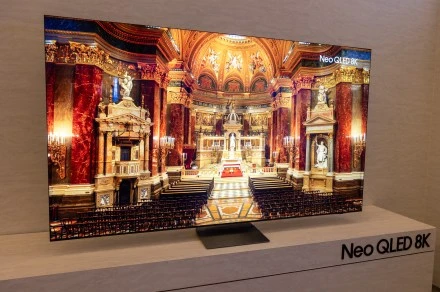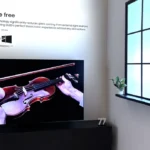Samsung’s 2024 TVs are bigger and packed with AI and accessibility features
Samsung’s CES 2024 lineup of QLED and OLED TVs offers bigger sizes, advanced AI features, and accessibility features for better sound and picture. If 2023 was the year of ultra-bright TVs, then 2024 is shaping up to be the year we see AI features burrow their way into them more than ever. Samsung revealed details on its much-anticipated 2024 Neo QLED and OLED TVs at CES 2024 in Las Vegas.
Samsung Neo qled 8K Lineup
8K TVs still suffer from not having much content out there to watch on them, but that hasn’t stopped the big TV brands from pushing the tech forward in anticipation. This year’s 8K lineup of Neo QLED mini-LEDs from Samsung includes two models, the QN800D and QN900D, available in 65- to 85-inch sizes. The QN900D Neo QLED is the slimmest 8K TV ever to hit the market, featuring an improved sound and enhanced Design.
Both new QLED 8K models are getting a processor upgrade to something called the NQA AI Gen3 that Samsung says features an on-device AI engine that is twice as fast as its predecessor and with eight times the neural networks. The new AI brain is driving smart features built into the 8K Neo QLEDs. For instance, the QN900D features AI Upscaling Pro and AI Motion Enhancer Pro for clearer and smoother visuals.
An improved Real Depth Enhancer Pro focuses on the clarity and contrast of objects on screen while maintaining the background. Gamers will appreciate the QN900D’s ability to support 240Hz VRR for smoother, faster gaming without cutting resolution. The redesigned U-shaped One Connect Box allows users to connect all their devices for a clutter-free setup.
Samsung Neo qled 4K Lineup
On the 4K front, Samsung’s Neo QLED lineup features the new contenders, including the Neo QLED QN90D and the QN85D. The QN90D is being offered in a huge 98-inch size, while the QN85D is available in 55- to 85-inch sizes. The new Neo QLED 4K mini-LED TVs feature an updated Neural Quantum Processor, 4K upscaling, and the upgraded Real Depth Enhancer Pro feature.
Samsung oled Lineup
Samsung’s quantum-dot OLEDs have gained a lot of praise and attention in the last couple of years, boasting excellently inky black levels and stunning contrast. For 2024, the Samsung OLEDs have moved up the alphabet with the S95D and the S90D, available in 55- to 77-inch models. The S95D introduces a Glare-Free technology that promises improved viewing in both low light and bright rooms.
The S95D also offers support for 144Hz VRR for gamers and is available with the One Connect Box. Additionally, enhancements to the built-in speaker distribution promise a cinematic surround sound experience. The range’s OLEDs are set to build on last year’s successes, offering unique Features and improved technology for a better viewing experience.
Active Voice Amplifier Pro and Other TV Features
Samsung is reacting to widespread complaints about dialogue on TVs and movies at home becoming harder to hear. In 2024, the company is adding new features to its TVs, including Active Voice Amplifier Pro, which boosts dialogue and sound effects for better audibility. Additionally, Samsung is introducing the Audio Subtitles feature, a world’s first on-device TV service that reads subtitles aloud in real-time.
What about Samsung MicroLED?
One of the big TV technologies that could give OLED a run for its money is microLED. Samsung made a big splash at CES 2023 last year with its 76-inch microLED TV, and at CES 2024, the company unveiled the 76-inch and the 114-inch models for the first time, with models available ranging from 76 to 140 inches. MicroLED stands at the pinnacle of display tech, promising new models and availability of microLED TVs later this year.
Samsung’s 2024 TVs are making significant strides in AI and accessibility features, offering an enhanced viewing and listening experience. With bigger sizes and advanced technologies, these TVs are set to elevate the home entertainment experience. Consumers can expect a wave of cutting-edge features that cater to various needs and preferences in the TV market.
Source: digitaltrends








No Comments